Archive
22 March 2021
Decoding movement intentions in the brain using ultrasound waves
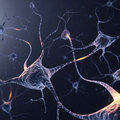
An international team of scientists that includes ImPhys researcher David Maresca published an article in Neuron today demonstrating decoding of movement intentions in the brain using ultrasound. The work shows great promises for the development of less invasive brain-machine interfaces.
18 March 2021
Faculty of Applied Sciences attracts four new Marie Curie Fellows
The Faculty of Applied Sciences has attracted four talented international researchers through the Marie Skłodowska-Curie Actions Individual Fellowships programme of the European Union. The new Fellows are: Anders Barth (Bionanoscience), Baptiste Heiles (Imaging Physics), Josep Ingla-Aynés (Quantum Nanoscience) and José Palomo Jiménez (Chemical Engineering).
08 March 2021
Retraction Nature article Quantized Majorana conductance
The authors of the 2018 article Quantized Majorana conductance have retracted this article. The authors were alerted to problems by two scientists in the same research area and then went on to re-examine their earlier measurements. In doing so, they found that the main conclusion had not been adequately substantiated.
08 March 2021
New test makes detection of genetic material visible to the naked eye
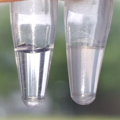
Onderzoekers van de TU Delft hebben een test ontwikkeld waarmee ze specifieke stukjes genetisch materiaal kunnen opsporen, waarna de uitslag met het blote oog af te lezen is. Met de test kunnen onder meer virussen, zoals het coronavirus, en antibioticaresistente bacteriën snel en goedkoop worden gedetecteerd. De resultaten zijn gepubliceerd in Biophysical Journal.
02 March 2021
Delft researchers develop a versatile hydrogen sensor
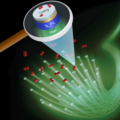
Hydrogen is playing an increasingly important role in the transition to a completely sustainable economy. Right now it is already being used on a large scale in industry, but it is also being used more often for sustainable energy storage and as a fuel for large and heavy vehicles in particular. There are plans for converting the existing natural gas network into a hydrogen network. However, under certain circumstances hydrogen is a combustible and sometimes even an explosive gas, so it is important to track down the tiniest hydrogen leaks as quickly as possible. This makes cheap, reliable and small sensors that can quickly detect small amounts of hydrogen of vital importance. Researchers at TU Delft have now developed a material that is extremely suited to this task.
02 March 2021
Researchers probe the ‘full’ thermoelectric properties of a single molecule
One of the dreams of physicists today is being able to harvest electricity back from dissipated heat. The key to this probably resides in circuits that contain single molecules. Instead of being limited to classical conductance, the thermopower can be enhanced dramatically by the properties of quantum states. But then, what quantum states offer good efficiency? What characteristics are desirable? Theory often offers contrasting predictions. Unfortunately, experiments have also not yet provided any proof, since they are notoriously difficult to set up. But now, researchers at Delft University of Technology (TU Delft) in collaboration with UC Louvain, University of Oxford, Northwestern University and Heriot-Watt University have done just that. They experimentally probed the gate and bias dependent thermoelectric properties of a single molecule for the very first time. The results have been published in Nature Nanotechnology.
18 February 2021
Simon Gröblacher appointed Full Professor
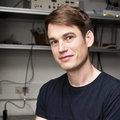
Het College van Bestuur van de TU Delft heeft besloten Simon Gröblacher (afdeling Quantum Nanoscience) te benoemen tot hoogleraar Quantumfysica.
18 February 2021
Windsurfing virus particles can bridge 1.5 metres

Can a light breeze nullify the 1.5-metre measure indoors? It looks like it could, says Saša Kenjereš (Chemical Engineering) in a new article in Annals of Biomedical Engineering. He modeled the way virus particles leave a talking person's mouth, as well as how far particles can travel in both quiescent and moving air. In doing so, he found that a virus can surf along on a slight tailwind and thus travel much farther than in an environment in which the air is completely still. In a room with stationary air, 1.5 metres seems to be a safe distance. But a barely perceptible breeze allows virus particles to bridge such a gap with relative ease.
11 February 2021
Reactor Institute Delft re-appointed as official partner of International Atomic Energy Agency

The Reactor Institute Delft (RID), the nuclear research reactor at TU Delft, has been selected as a Collaborating Centre of the International Atomic Energy Agency (IAEA) for the fourth time. The IAEA and RID have agreed to expand their area of cooperation in Neutron Activation Analysis (NAA) to neutron beam-based methodologies – a key technique in materials research, biology and medicine.
03 February 2021
CO₂ removal from the atmosphere using sustainable energy
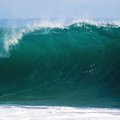
Er wordt hard gewerkt aan methodes om CO₂ af te vangen uit de atmosfeer, om op die manier klimaatverandering tegen te gaan. Naast bestaande methodes met giftige oplosmiddelen, zijn er nu elektrochemische technieken in opkomst die kunnen werken met duurzame elektriciteit. De Delftse onderzoeksgroep van David Vermaas analyseerde samen met Wetsus en Caltech deze verschillende duurzame methodes om CO₂ af te vangen en vergeleek ze voor het eerst met elkaar. Daarnaast beschreven de onderzoekers ook welke methodes de meeste potentie hebben om grootschalige CO₂-afvang mogelijk te maken. Hun paper verscheen onlangs in het wetenschappelijke tijdschrift Energy & Environmental Science.